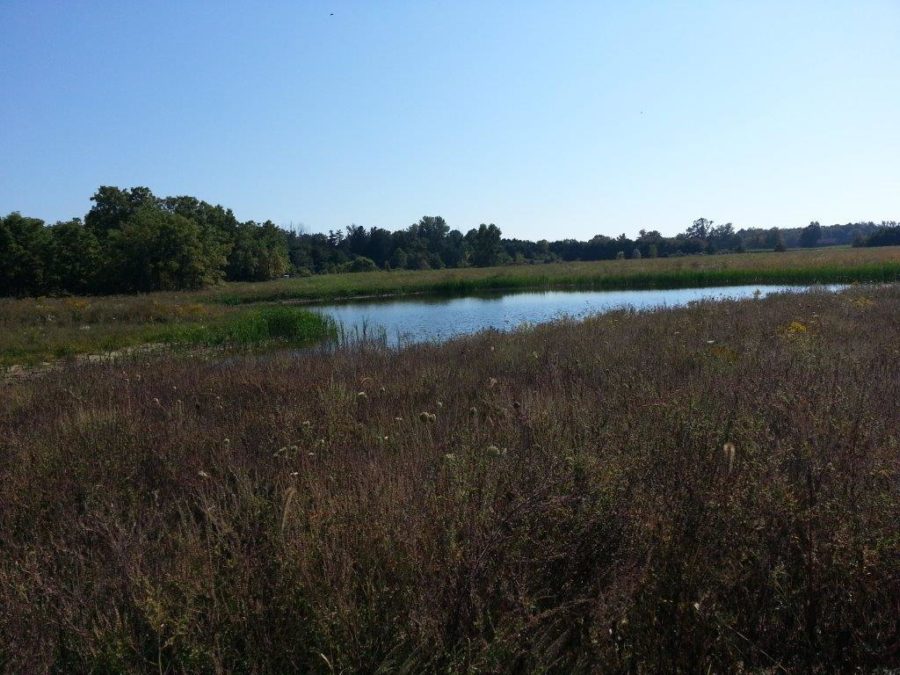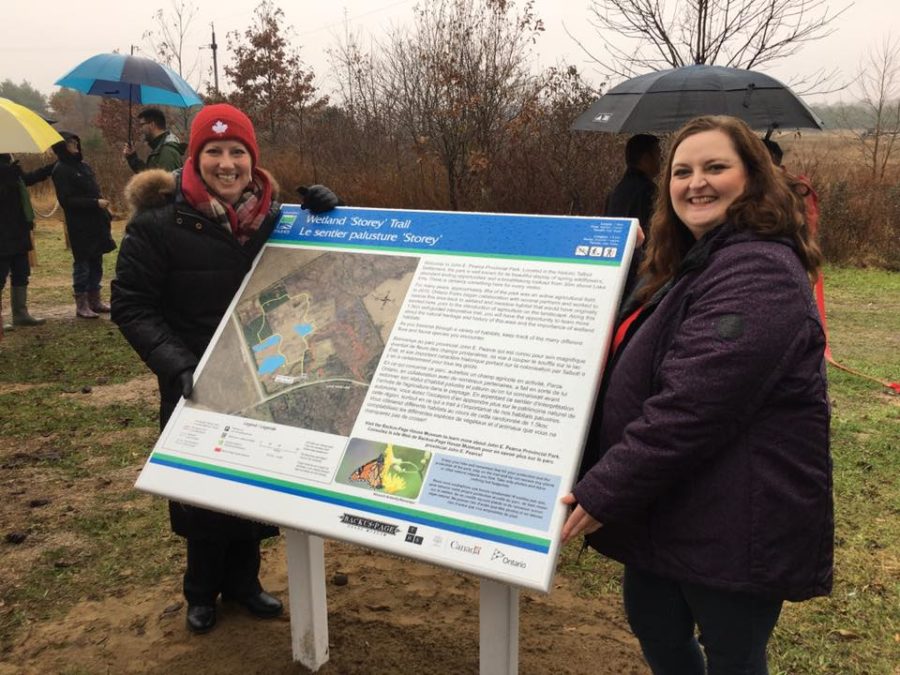2017 was a remarkable year at John E. Pearce Provincial Park. Not only did the park celebrate its 60th anniversary, but it was also the grand opening of a multi-year wetland restoration project and Wetland “Storey” Trail.
Here’s the before shot:

And here’s the after:

What a change!
This project was very special because wetlands play such an important role in our landscape and are a vital part of any healthy ecosystem. These dynamic systems are constantly changing from year to year depending on water levels, spring melt and rainfall.
Wetlands provide us — and the many species that depend on them — with a variety of different resources and functions such as providing food, habitat, water filtration and flood protection.

Wetlands are also helping in our battle with climate change by sequestering carbon; carbon dioxide can be trapped and stored within a wetland if left undisturbed for a long period of time. And, because wetlands are extremely sensitive to changes in their surroundings, they need our protection and understanding.

When the initial planning for John E. Pearce’s wetland restoration began in 2015, it involved local stakeholders and volunteers, adjacent landowners, numerous supporters, as well as staff from Ontario Parks, the Ministry of Natural Resources and Forestry and the local Conservation Authority. It became very clear, very quickly, that being a part of creating something so valuable was important to everyone involved.
In 2016, the process of restoring 8 ha (20 acres) of former agricultural land had really began to take off. That spring, the local Conservation Authority planted 2000 seedlings on site while the preparation of the fields were taking place.
Once the planting was complete, the construction of three wetland cells followed in the fall of 2016.

Not long after, two White Pine plantation blocks on the property were thinned in order to aid in species diversification. In the spring of 2017, the Conservation Authority continued to plant another 6,000 trees and, at about the same time, Ontario NativeScape and Rural Lambton Stewardship Network planted 3.5 ha (8 acres) of native pollinator and Tall Grass Prairie habitat throughout the site.
From there, a 1.5 km walking trail was created and finished with a smoothed surface of chips and dust. As the trail meanders through the restoration site, visitors can enjoy 15 bilingual interpretive panels, which speak to the ecology and history of the area.

An accessible viewing platform was also erected at the first wetland cell, which provides a better vantage point for visitors to appreciate the wetlands.

Loafer logs will be placed within the wetland cells to provide aquatic structure and variety of specialized habitat features including bird, duck and bat boxes, as well as a snake hibernaculum will further complement this incredible project.
There are also plans this spring for a prescribed burn to be conducted on the area immediately north of the restoration site, with additional tall grass prairie planting immediately following the burn.
Previous efforts to eliminate invasive plant species occurring within the site will also continue to be ongoing.
A big thank you to everyone who made this project possible!
This amazing project was only possible with the support and funding from our many partners and contributors.

We would like to extend our gratitude and sincere thanks to:
- Tyrconnell Heritage Society and the Backus-Page House Museum
- Government of Canada/Canada150 grant
- TD Friends of the Environment Foundation
- Government of Ontario
- Ontario NativeScape and the Rural Lambton Stewardship Network
- Elgin Stewardship Council
- Kettle Creek Conservation Authority
- Forests Ontario and the 50 Million Tree Program
- Elgin Clean Water Program
- Municipality of Dutton/Dunwich
- Littlejohn Farms and Darrell Dick Excavating
Everyone involved in this project should be very proud!
Where’s the park?
For those who may not know about this unique gem of a park, John E. Pearce Provincial Park is a day-use-only park, located just south of Wallacetown, on the shores of Lake Erie.

History
The park was named after the gentleman who generously donated the land in the 1950s and this property had been held by his family since it was first settled in 1809. Steeped in history and located in the heart of the Talbot Settlement, a restored 1850s Georgian style house (Backus Page House Museum) sits on the property and is operated by the Tyrconnell Heritage Society.

Visitors can step back in time with informative tours of the house, which tell the stories of the Backus family or experience a variety of other interesting events hosted by the Society onsite.
For more information on the Backus Page House, the Tyrconnell Heritage Society and their events, visit http://backuspagehouse.ca/.
Hiking and natural beauty
The park also offers the Spicer Trail, where ample birding opportunities and a lovely 2 km hike through mature hardwood forests await.

Fifteen interpretive stops are described in the trail guide and 30 trees are identified along this trail.
A small picnic area sitting atop 30 m bluffs on the lakeside provides visitors with a beautiful vista looking out over Lake Erie.

